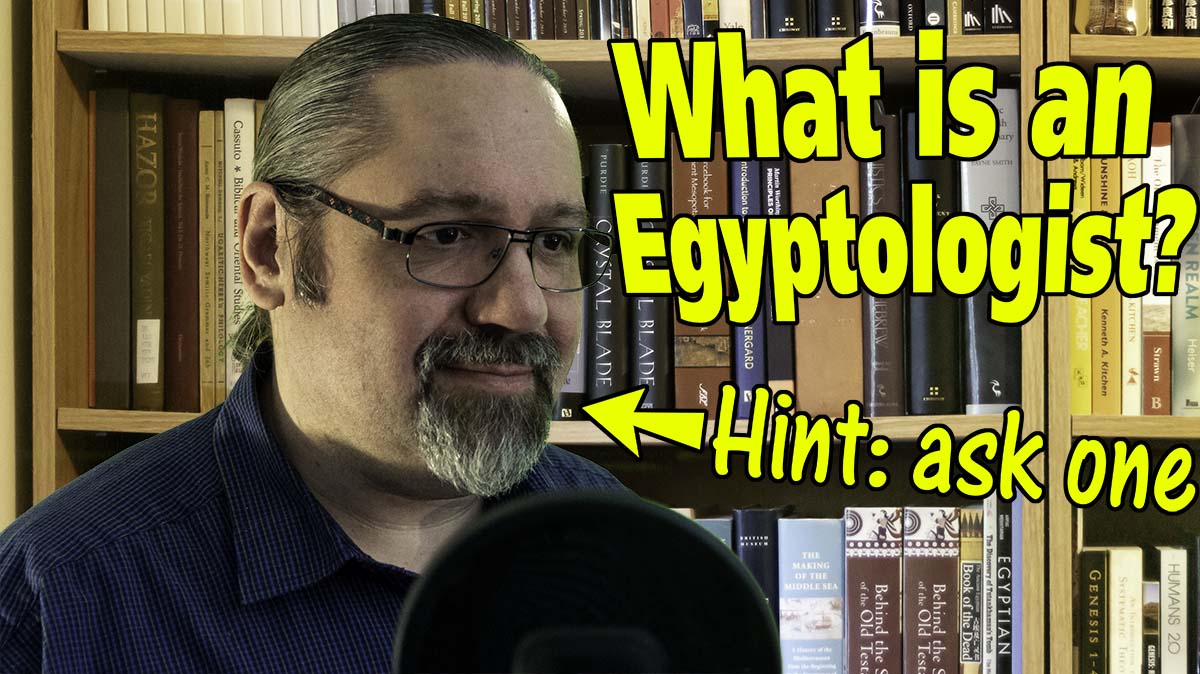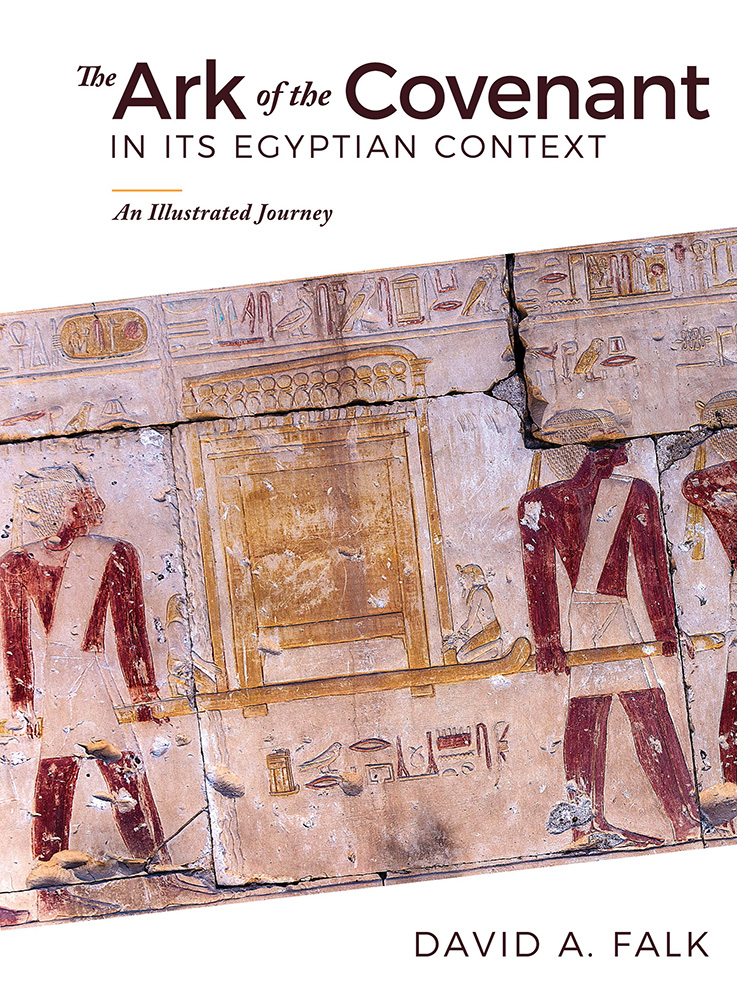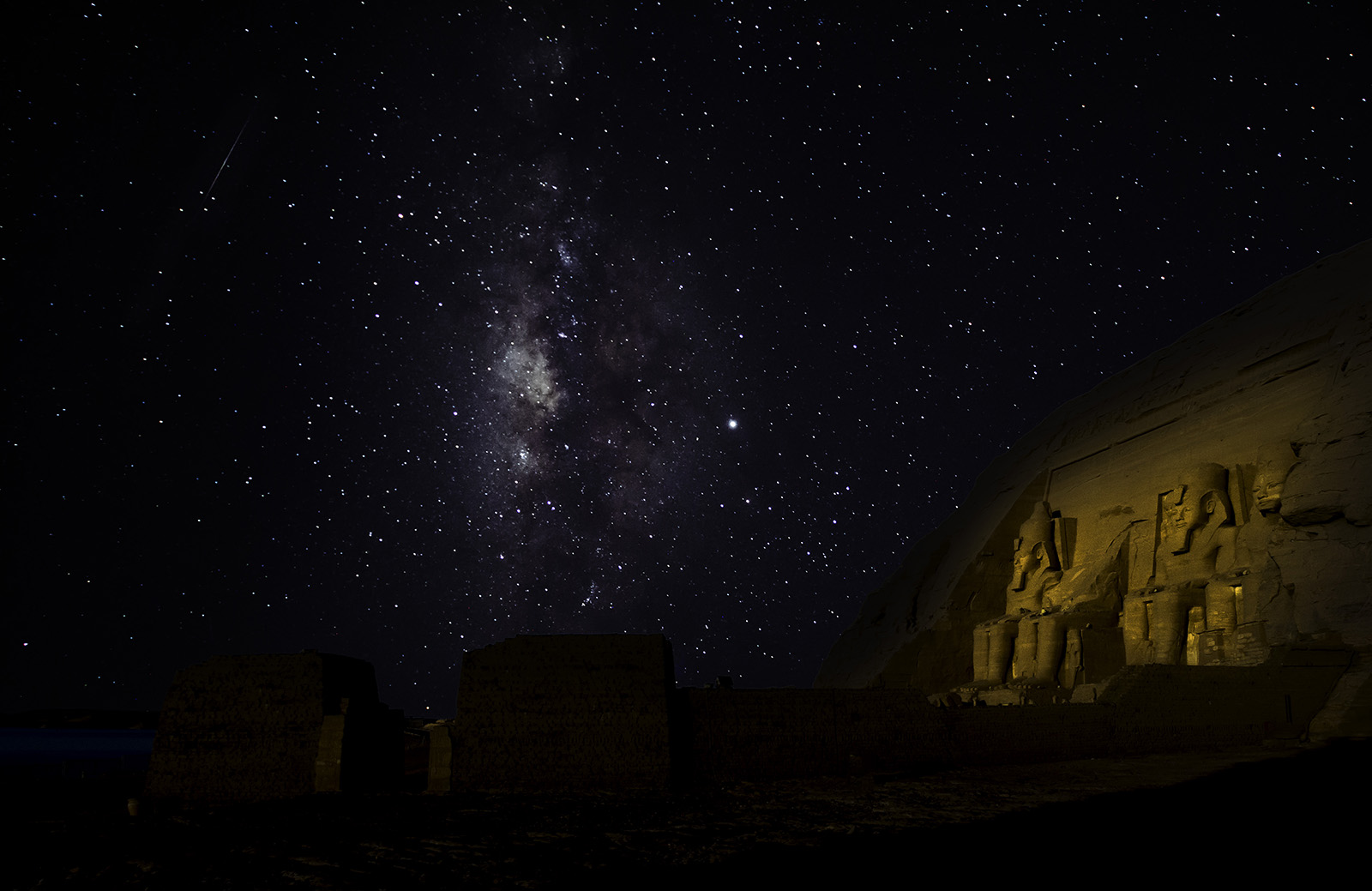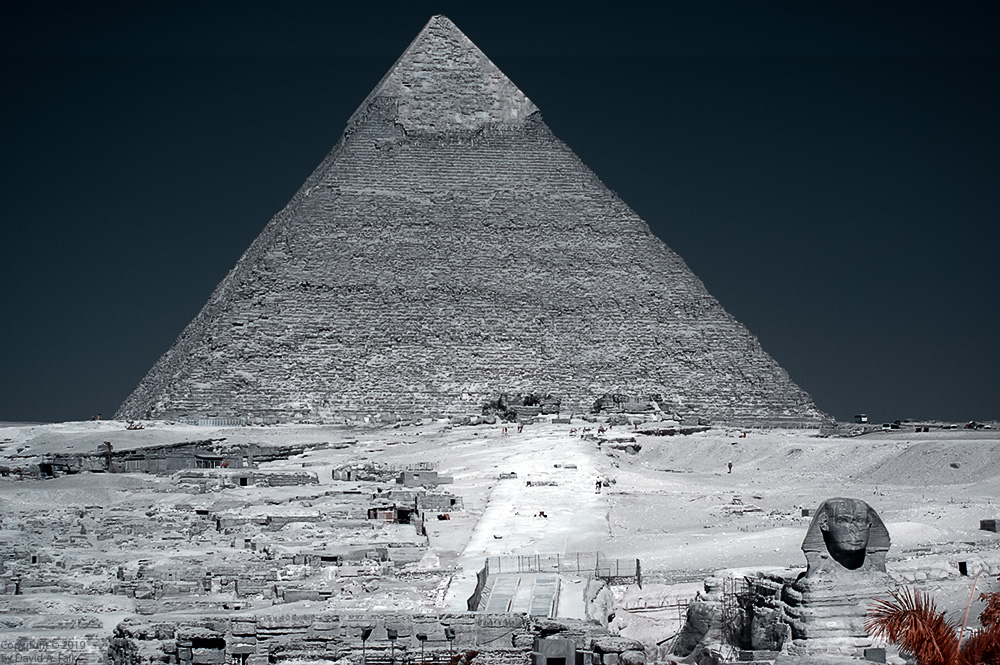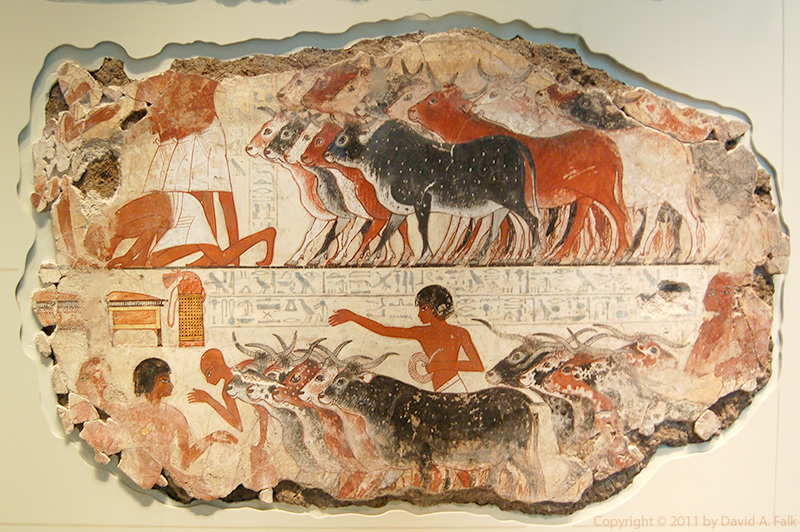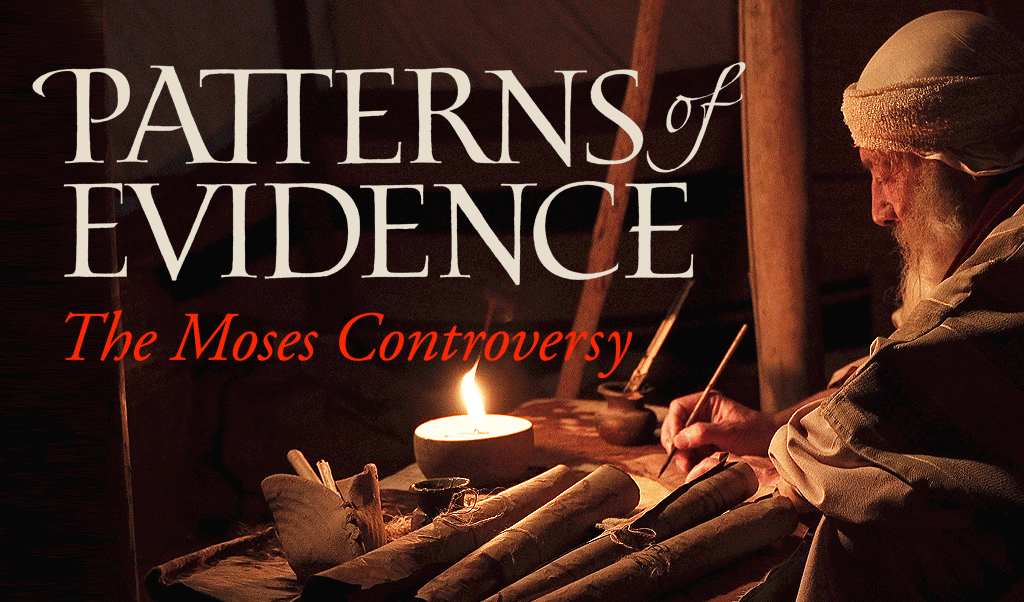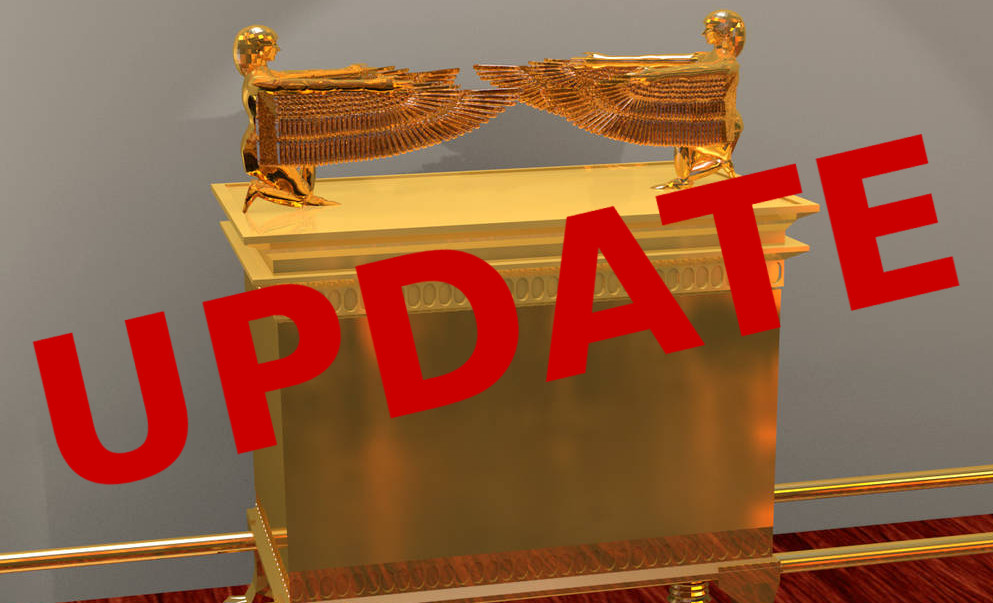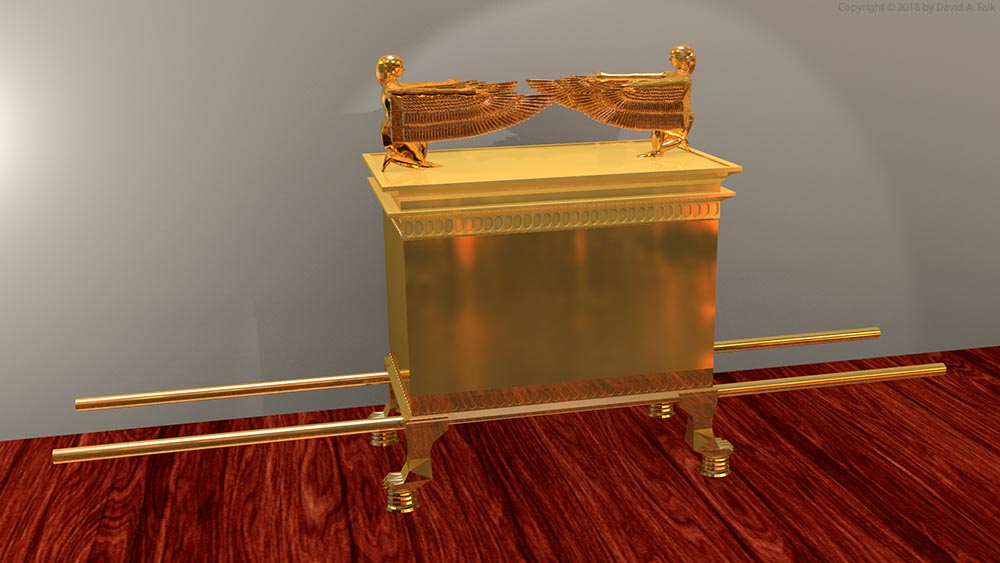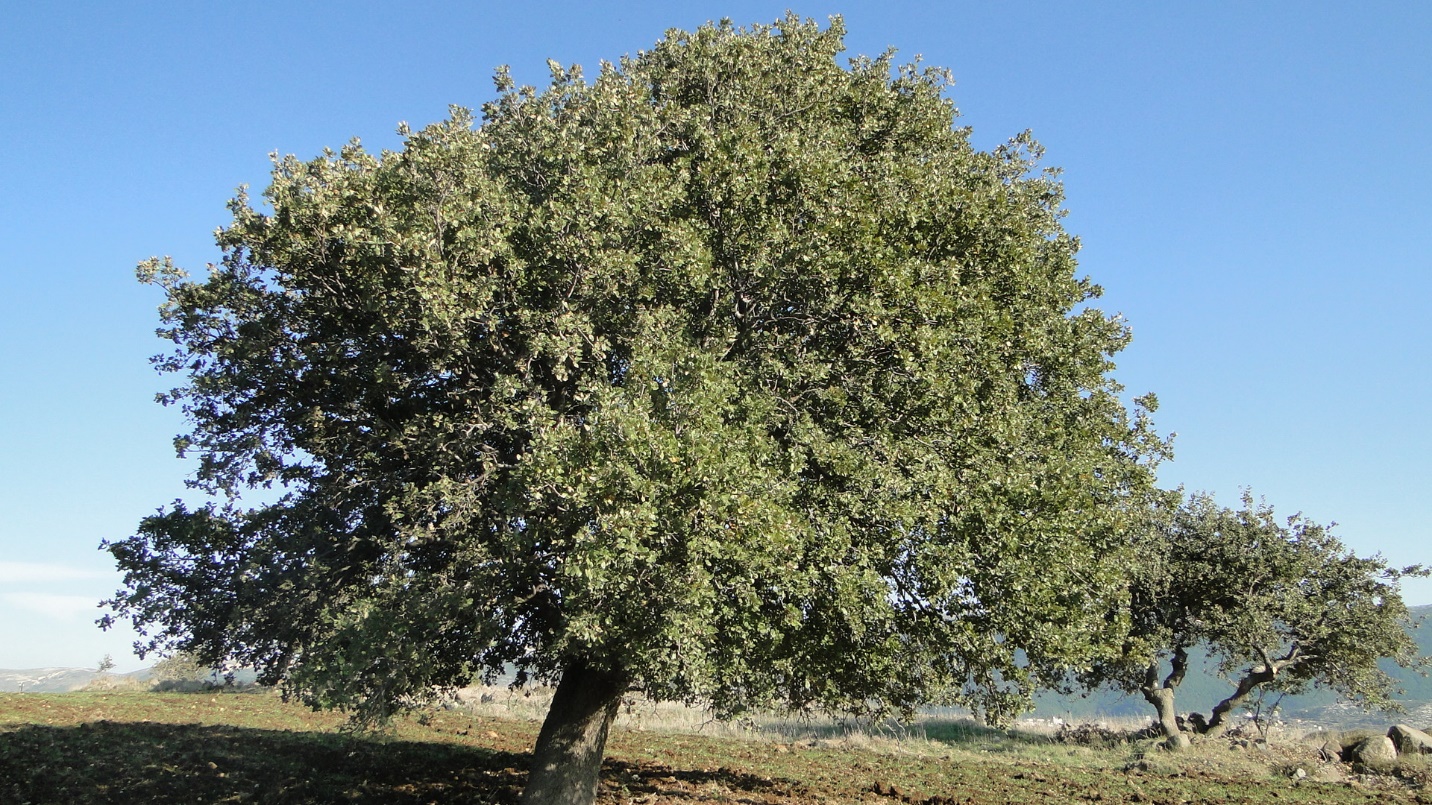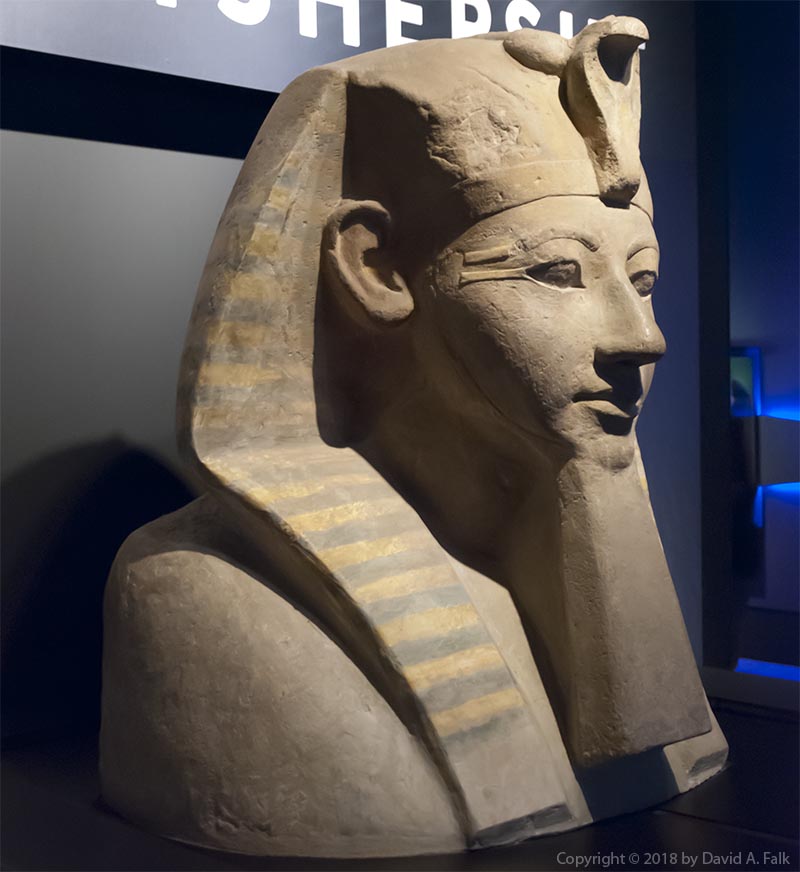I wanted to make my readers aware that I’ve started a new Youtube channel. The purpose of the channel is to answer people’s questions on ancient Egypt and the Bible. I’ve already posted two videos and I hope you will subscribe for the latest content.
Category: News
Cover reveal for my new book.
I am happy to show you all the cover for my forthcoming book, The Ark of the Covenant in its Egyptian Context: An Illustrated Journey. The release date is set for December 1, 2020. And you can pre-order it now on Amazon. Pre-order on Amazon
Astrophotography of Abu Simbel
I thought that I would share a photo of the Great Temple at Abu Simbel that I took last July during my trip to Egypt. Being close to the Sudan border, there’s very little light pollution so the night sky is absolutely spectacular. I’m hoping to include this photo in my forthcoming book, which the publisher has decided to title “The Ark of the Covenant in its Egyptian Context: An Illustrated Journey.”
December 2019 Update
It’s been a while since I’ve posted anything on my blog. I know. I know. I promised to post regular bits of odds and ends until I finished my book, but that didn’t happen. Sorry. But I thought I would give a quick status update of what’s been happening, seeing as people are still reading my blog.
In July and August, I was in Egypt taking photographs for my book. It was three weeks of the most intense heat that I’ve ever experienced. And I returned with 28000 photographs, including the infrared photo above of the Pyramid of Khafre.
In November, I gave talks at the Evangelical Theological Society conference and the annual meeting of the American Schools of the Oriental Research. At the former, I gave a talk on purity concepts in ancient Egypt. At the latter, I presented a paper on violence in Egyptian religious iconography. Both talks were very well received. Plus, I made a lot of new contacts and friends in San Diego.
My Ark of the Covenant book is making steady progress. I’ve completed the rough draft of the first five chapters and am now working on the conclusion. I am excited to report that the publisher wants to make this a visually stunning volume packed with photographs.
And on Jan 11, 2020 at 1:30 pm, I will be giving a talk on the Ark of the Covenant at the Kehillath Tsion Messianic Jewish congregation.
Finally, I would like to wish all my Egypt and the Bible readers the best of the holiday season. I hope you all have a Merry Christmas and a most blessed New Year.
A New Book with Hendrickson Publishers
I am happy to announce that I have signed a book contract with Hendrickson Publishers. The book will be on the Egyptian context of the Ark of the Covenant. This will be a context study that will show where the Ark fits in the narrative of the ancient Near East. I will be writing the book for the non-expert. Yet, I will include lots of detail for those who want to see the trees as well as the forest.
I expect the book to be about 300 pages with lots of illustrations and photographs.
The Moses Controversy: More So-called Patterns of “Evidence”
Here we go again. Tim Mahoney has produced another Patterns of Evidence film. This time called The Moses Controversy.
Mahoney’s method of film-making is pretty straight forward. Gather together an ensemble cast of legitimate scholars, then lionize some fringe loon on the outskirts of the academic radar. Last time around it was David Rohl. This time it looks like Mahoney is going to lionize Douglas Petrovich. Petrovich’s thesis is that the Bronze Age Semitic inscriptions found in the Sinai contain Hebrew as well as the names of three persons in the Bible: Asenath, Ahisamach, and, of course, Moses.
In the months to come, I know that my inbox is going to fill up with inquiries about the quality of Petrovich’s research and this movie. Since I have not yet seen the movie (it’s not being released until March 2019), I can’t comment on it directly. I saw the last Patterns of Evidence movie, and it blithely ignored practically everything we know about Egyptian chronology. If past results are any indication, I don’t have much hope for this film.
Nevertheless, I can comment on the quality of Petrovich’s research. From the trailer, The Moses Controversy looks like it will be based largely upon the Petrovich’s book The World’s Oldest Alphabet. Last year, I reviewed that book for The Review of Biblical Literature. The Review of Biblical Literature is the leading publication for the review of Bible literature and scholarship. So, instead of commenting directly upon the quality of Petrovich’s scholarship, I am going to reprint my 2018 review below and let the reader decide the quality of Petrovich’s scholarship.
Review of The World’s Oldest Alphabet: Hebrew as the Language of the Proto-consonantal Script
Book by Douglas Petrovich. Reviewed by David A. Falk.
Published by Carta Jerusalem, 2017. Pp. xvi + 262.
Hardcover. $84.00. ISBN 9789652208842.
The premise of Douglas Petrovich’s The World’s Oldest Alphabet is that Hebrew is the language that underlies the early alphabetic inscriptions that were found in Egypt, which Petrovich calls proto-consonantal inscriptions (7). While not stated until the end of the book, by showing that Hebrew underlies these early inscriptions Petrovich seeks to prove that the exodus took place in 1446 BCE (195).
Chapter 1 (14 pages) sets out to discuss background matters to the early alphabetic inscriptions. In this section, Petrovich explains how he arrived at the view that “the world’s oldest alphabet, is Hebrew” (10). He starts with the assumption that the exodus occurred as a historical event in 1446 BCE and asserts that Joseph’s son Manasseh was Ḫebedeb, one of the “Hebrews” who wrote the Serâbîṭ el Khadîm inscriptions. He states that “the goal of the present work is to demonstrate that Hebrew is the language behind the original proto-consonantal script, and to translate 16 inscriptions from the Bronze Age that validate this claim as true” (11).
Chapter 2 (61 pages) contains translations of Middle Kingdom texts Sinai 115, 376, and 377, Wadi el-Hôl 1 and 2, and the Lahun Bilingual Ostracon. Chapter 3 (111 pages) has translations of New Kingdom texts Sinai 345a/b, 346a/b, 349, 351, 353, 357, 360, 361, 375a, and 378. This is a surprisingly small data set for a book of this nature. Further, when one considers the amount of cognate material available, perhaps more surprising is that no early alphabetic inscription from the Levant is referenced that might have supported the argument.
Petrovich works through each text with a “background to the inscription,” “paleographic decipherment,” “translation and orthography,” and “potential historical value.” His contribution is to review the epigraphy of previous scholars and supply his own readings. The bulk of the book involves the thought process of deciphering the alphabetic letters for each inscription. The decipherment of each letter is compared to how other epigraphers have read the letters, often disagreeing with more mainstream scholars.
Despite the small data set used, I found issues in the treatment of most of the texts. Some errors are relatively minor, such as the transcription of the Egyptian text for Sinai 377, which should be ʿnḫ mἰ rʿ ḏt instead of ʿnḫ(w) ḏt (30). Other issues are more serious or undermine the credibility of his thesis, such as his handling of the Hebrew. Several readings deviate from standard Hebrew. Finally, some readings appear forced, resort to eisegetic glosses, or rely upon extended explanations for support.
Given the highly subjective and visual nature of decipherment work, it is difficult to critique an epigraphic process without plunging into a highly detailed critique that focuses on only one example. Instead, I have selected a few of the sixteen readings to demonstrate some of these issues.
Sinai 376: “The house of the vineyard of Asenath and its innermost room were engraved. They have come to life” (65). Petrovich says that this “almost certainly was a posthumous reference to Joseph’s wife” (72) without broaching the possibility that this Asenath may not be the same person found in the Bible. He explains that “the house of the vineyard of Asenath figuratively would be brought to life with these engravings” (71), yet he forgets to discuss the inconsistency between his reading and the archaeological context. Egyptian houses were made of mudbrick and decorated by painting, not engraving.
Sinai 346b: “because of the favor of the abundance of the son’s sheep” (96), a reading that proposes perhaps the longest chain of nonconstruct genitives discovered in so-called Hebrew. This grammatical construction would be highly peculiar in ancient Hebrew.
Sinai 357: “A curse of 100-fold has passed through our people. A swooping has befallen us” (145). Petrovich explains “a swooping” as follows: “Just as an eagle swoops down on its prey at enormous velocity … the Hebrews fell victim to an overwhelming force that attacked them without any warning” (152). This explanation does not clarify what is a strange word choice and seems more like ad hoc reasoning.
Deviations from standard Hebrew present an obstacle for a thesis trying to prove Hebrew as the underlying language of these texts. It would have helped the reader if Petrovich had explained—or at least recognized—these idiosyncratic features of early Hebrew and relate them to other known Semitic examples.
Furthermore, the epigraphy is curious. With Sinai 115, Petrovich muddles the Egyptian p with the early orthography of the letter bet to read ἰbr (19). He implies that this orthography equals ʿibrî, “Hebrew” (23). While this might seem esoteric, this epigraphic argument is one of the central pillars of the case presented by this book (191). However, this reading is strange given that the Egyptian ἰ is not equivalent to the Hebrew ayin.
Petrovich’s argument that the channel-cut style of the glyph means that this letter cannot be an Egyptian p (19) is special pleading. Numerous examples of a channel-cut Egyptian p exist, including from within the formal Egyptian text in the upper portion of Sinai 115 itself. Besides, context alone makes this reading implausible because the so-called Semitic letter occurs inside a text of otherwise uncontested Egyptian letters, making the Egyptian p more plausible.
Petrovich further claims that the Egyptian gb-ἰtw in Sinai 115 really means “Bethel.” He justifies this claim with a “historical” explanation instead of a linguistic explanation. Since God wrestled Jacob “on the ground” (27), Ḫebedeb would have associated the God of Jacob with the Egyptian earth-god Geb. Therefore, “‘the house of (the) God (of / on the earth)’ (=Bethel)” (28).
For Sinai 357, Petrovich reads the seventh horizontal letter as an ox-head aleph. Petrovich states that “the antlers consist more of jagged lines than of a continuous curve” (144) but has not seemed to grasp that oxen have horns, not antlers. This error is made consistently through the book (32, 49, 67, 82, 102, 107, 109, 110, 128, 132, 134, 146, 148, 155, 177, 183, 190). He defers to previous epigraphers to justify this reading even though the Sinai 357 letter is actually two letters, nun and kaph, written close together.
Sinai 361 is read “Our bound servitude had lingered. Moses then provoked astonishment. It is a year of astonishment because of the Lady” (160). Petrovich acknowledges that he has to depart from normal Hebrew syntax to read “Moses” in this text (165). By ignoring normal Hebrew syntax to find the name Moses, this strongly suggests confirmation bias. While the reading of the first letter is better than most readings, with Petrovich correctly discerning the vertical stroke on the right side of the character, he reads it as a bet instead of a yod when polynomial texture mapping reveals that the bottom horizontal line extends beyond the vertical line. This would make the main verb יחש , “empty,” and preclude the identification of Moses in this text.
Sinai 375a (HSM 1935.4.7) is read as a dual Egyptian/Hebrew inscription, “The overseer of minerals, Ahisamach. The one having been elevated is weary to forget” (175). Besides a translation that makes little sense, the reading infers an Egyptian y that the epigraphy cannot support after a Hebrew khet in “Ahisamach” and ignores a string of characters (ayin, lamed, zayin) that follow immediately after the supposed yod, traces of which have been noted by other epigraphers[1] and that can be easily seen under strobe examination of the stela.
The translation of the Egyptian portion of Sinai 375a is doubtful. Petrovich reads Gardiner Sign M42[2] as an abbreviation for ἰmyw, “minerals,” citing Vygus’s online self-published word list as his source without reference to the exact entry or page number (174). However, no word ἰmyw meaning “minerals” is in Vygus[3] or any other standard Egyptian dictionary.[4] Petrovich provides no evidence that Sign M42 was ever used as an abbreviation for “minerals” (179).
Although the epigraphy is a problem, Petrovich’s dating is more so as it relies on circular reasoning by assuming the conclusions he is trying to prove. He starts with the premise that the name Ahisamach appears only in the book of Exodus (181). Then he begs the question by leaping from “if the Ahisamach of Sinai 375a is the same man as the lone biblical personage of that name” (182) to “the significance of Sinai 375a to the present study cannot be underestimated … due to its identification of an obscure biblical character [Ahisamach] of this latter date in an historical context” (182).
Not content to stop there, he assumes an early exodus view, dates the stela according to that assumption, then claims the date of the stela as proof for an early exodus. According to Petrovich, the exodus dates to 1446 BCE, so Sinai 375a must date to about thirty years earlier to circa 1480 BCE (182). Then he concludes that the dating of the early alphabetic inscriptions “is the refutation of errant views of Biblical chronology, such as the late exodus view” (195).
Chapter 4 (15 pages) offer “concluding thoughts,” where Petrovich states that the early alphabetic inscriptions “can be equated with Hebrew confidently” for three reasons: (1) the presence of the noun “Hebrews” in Sinai 115; (2) each early alphabetic letter has a Middle Egyptian “hieroglyphic exemplar”;[5] and (3) the presence of “three biblical figures who have names used of only one person in the Bible” (191). However, these reasons seem unrelated to the central thesis that Hebrew is the language that underlies the early alphabetic inscriptions, and no attempt is made to deduce a conclusion from linguistic arguments. Instead of discussing the overarching nature of the inscriptions and the Hebrew within them, Petrovich shifts his argument to using the supposed presence of Hebrew as proof that the exodus took place in 1446 BCE and as support for the historical events that took place in the books of Exodus and Genesis (186–87, 195–99).
Even though much of the final chapter is devoted to the early dating of the exodus, a sizeable portion is also devoted to irrelevant issues such as the gender of the golden calf (199–200), why only those with his specialized education have “the ability to contribute to the topic in any truly significant manner” (188), and why his methodology is beyond questioning: “even if someone were to receive the appropriate training … archaeologists and ANE scholars would then turn around and accuse that researcher of applying improper methodology” (188). However, this defensive posture draws attention to Petrovich’s methodology.
Petrovich used publication photos magnified to 400 percent in Microsoft PowerPoint (xii, 86), a method no modern epigrapher would recognize. Petrovich did not use specialized (multiple light or multispectral) photography and strobe lighting. Advanced imaging software such as DStretch or Photoshop was not used. The best recent photographs and polynomial texture maps were not used. Petrovich did not examine most of these inscriptions in person, nor did he use the most recent epigraphic tools. This has led to epigraphy that is inferior to Hamilton’s readings of a decade ago.
In addition, Petrovich cites himself thirty-nine times, which shows inadequate interaction with prior scholarship. Some citations refer to ideas that other authors said long ago; for example, he states that “the exodus pharaoh (Exod 5:1) is Amenhotep II (Petrovich 2006)” (197), when that same idea was claimed by James Orr and J. W. Jack.[6] If Petrovich
had cited Orr and Jack’s identification of Amenhotep II in the 2006 article, then these citations may have only been weak scholarship; however, neither this book nor the 2006 article cite Orr or Jack.
Some of the self-citations conceal an original source (28, 74, 152, 195); for example, compare “which totaled 101,128 (Petrovich 2006: 102, 104–106)” (28) with “The figures given totaled 101,128,” taken from ANET. In this case Petrovich cited original sources in his article then cited his own article with no reference to the original sources.[7] Source materials with easily available citations were handled in a sloppy manner.
Eighteen self-citations are to an unpublished, unfinished work. This is regrettable. Given the bold claims of the book, having so many citations dependent upon a work that may not come to fruition is deeply unsatisfying. Some of these come at critical junctures in the book when evidence would have been really useful. For example, Petrovich states that “Asenath was the wife of Joseph and the mother of Ephraim and Manassah, the two sons who departed from their father’s house when their grandfather (Jacob) informed Joseph that he was confiscating them and taking them to live among their uncles as their equals (Gen 48:5, 15–20), which can be demonstrated archaeologically (Petrovich: in prep)” (70). If it can be demonstrated archaeologically, surely an adequate citation must exist. Would not that evidence be germane to the central argument?
Ultimately, Petrovich never supplies proof that his translations are from Hebrew as opposed to any other Semitic language. Nor does he compare the early alphabetic inscriptions with earlier Semitic languages such as Akkadian. This is baffling, given that Eugene Merrill, who wrote the preface, lauded him for “His acclaimed expertise in … comparative linguistics and literature” (vi).
Even though pastors and teachers may consider purchasing the book, these audiences might find the content unsuitable. The writing style employs dense prose and makes comparisons only specialists with experience in epigraphy might comprehend. The level of detail could overwhelm the nonspecialist while the lack of evidence would likely disappoint those expecting a quality academic work. All things considered, the best thing about this book is that the publisher, Carta Jerusalem, brought its experience as a mapmaker to create a volume with beautiful typography and flawlessly printed graphics.
After carefully reading The World’s Oldest Alphabet, I cannot recommend this book. This work is deeply flawed, with many examples of confirmation bias, logical fallacy, and failure to engage the existing scholarship. The translations are based upon an inadequate methodology, a doubtful epigraphy, and a poor understanding of ancient languages. The evidence that the book presents is insufficient to warrant the hyperbolic claims, and the tone of the writing does not seek to convince as much as forcefully assert its conclusions. The problems with the book are plentiful and easy to discover, and the work does not advance existing scholarship.
Footnotes.
1. E.g., Gordon J. Hamilton, The Origins of the West Semitic Alphabet in Egyptian Scripts (Washington, DC: Catholic Biblical Association of America, 2006), 374–75.
2. Gardiner Sign M42 was often confused with Gardiner Sign Z11 in ancient Egyptian orthography, with Z11 eventually replacing M42; however, the two signs are not exact phonetic equivalents. Petrovich probably means Z11 (ἰm, wn) instead of M42 (wn). The inability to keep graphemes and phonemes straight is, unfortunately, systemic in the book.
3. Mark Vygus, “Middle Egyptian Dictionary,” 1097–1099 and 2258–2267. http://www.pyramidtextsonline.com/MarkVygusDictionary.pdf.
4. E.g., Rainer Hannig, Großes Handwörterbuch Ägyptisch–Deutsch (2800–950 v. Chr.) (Mainz: Zabern, 2009), 77. The closest phrase that means “minerals” is ἰmyw tꜣ, “that which is from the earth,” but no reference is made to this expression in the book.
5. The idea that the early alphabetic letters are derived from Middle Egyptian hieroglyphic characters is not a claim new to this book. However, this book does not address this subject until appendix 1, where the treatment is somewhat idiosyncratic compared to other epigraphers who have worked on the topic, such as Goldwasser and Hamilton.
6. James Orr, The Problem of the Old Testament (New York: Charles Scribner’s Sons, 1906), 422–23; J. W. Jack, The Date of the Exodus in Light of External Evidence (Edinburgh: T&T Clark, 1925), 117.
7. “The Asiatic Campaigning of Amen-hotep II,” translated by John A. Wilson (ANET, 247 n. 48), which is quoted in Douglas Petrovich, “Amenhotep II and the Historicity of the Exodus-Pharaoh,” TMSJ 17 (2006): 102 n. 114.
Beyond Indiana Jones: Backpedaling on Ark Claims
After my blog last week expressing skepticism over the news story announcing the discovery of the Ark of the Covenant, LiveScience.com has walked back its story. The fact is that, lurid tales of killer priests and fabulous treasure aside, a Western professor has seen the ark in the Church of Our Lady Mary of Zion.
The Man who Saw the Ark
Edward Ullendorff saw the ark inside the Church of Our Lady Mary of Zion. Ullendorff was a professor at University of London’s School of Oriental and African Studies (SOAS). He also served as an army officer attached to the British armed forces in 1941. And he was with them, when British forces took Ethiopia from the fascist Italians. With soldiers to his back and no one to stop him, Ullendorff had access to the ark within the church.
When he was still alive, Ullendorff gave an interview to the L. A. Times in 1992 debunking Graham Hancock’s claims. Ullendorff stated that he saw “a wooden box, but it’s empty.” He described it as a “Middle- to late-medieval construction, when these were fabricated ad hoc.” He maintained that the Church of Our Lady Mary of Zion possessed a medieval period replica of the ark.
Ethiopian Replicas
These replicas are a common feature of Ethiopian Coptic churches, and none of them are the real Ark of the Covenant. They serve an important role as an idealized place of veneration and religious focus.
These arks function like the altars in Roman Catholic churches. In Roman Catholic churches, the altar is not really a place were consecrated offerings are incinerated with fire — they are technically offering tables that are called altars.
The tabot (or “ark”) in Ethiopian churches serve a similar purpose. The word tabot comes from the Aramaic tebuta, which descended from the Egyptian tbt, “box, chest.” The purpose of the tabot is to remind the onlooker of the Mosaic law and the tablets of the Ten Commandments.
But this is not a the first time an outsider has seen an Ethiopian ark. In 2002, a Scottish church returned a tabot to Ethiopia. Photographs of these tabot show that they are nothing like the original Ark of the Covenant. They are small wood boxes that a single priest carried over his head. In contrast, the original Ark was 2.5 cubits (45 inches) long by 1.5 cubits (27 inches) wide and high (Exod 25:10) and the priests carried it on poles (Exod 25:13-14).
No doubt exists that these Ethiopian arks remain important religious and historical artifacts. But they are only historically significant to the medieval world of Axum, not the late bronze age world of Israel.
Beyond Indiana Jones: A Dodgy Ark of the Covenant Claim
Few bible topics seem to attract as much prurient excess like the Ark of the Covenant. Studies on the Ark have typically followed two unhealthy extremes. These studies either follow the path of extreme skepticism after Julius Welhaussen, Gerhard von Rad, and the biblical minimalists. Or they follow the treasure hunting of Ron Wyatt, Graham Hancock, and a large host of other weird players.
What makes this issue timely was a story on Fox News yesterday re-announcing that “Bible scholars believe the legendary Ark of the Covenant may have landed in Africa…” The ‘scholar’ who announced this was Bob Cornuke who is a self-styled adventurer after the likes of Indiana Jones. He has searched for Noah’s Ark, the biblical Golgotha, the ‘real’ Mount Sinai, and now the Ark of the Covenant.
Treasure Hunters
Treasure hunting is hardly new when it comes to the Ark. In AD 1899, Freemasons and British-Israelites destroyed the archaeological site of Tara in Ireland looking for the Ark. More recently, the upsurge of dispensational premillennialism in the 1970s renewed interest in end times events. That interest in eschatology also kindled an interest the Temple and Tabernacle inviting an influx of speculative theories. Ron Wyatt fed upon this fervor in the late 70s and into the 1990s.
Graham Hancock (1993) used the legend in the Kebra Negast and sterile speculation to suggest Solomon impregnated the Queen of Sheba. The son of Solomon and the Queen of Sheba returned to Axum (Ethiopia) to take up his throne. Solomon, loving his son, made a copy of the Ark for the son to take back with him. But the alleged son swapped out the real Ark with the fake. The son returned to Ethiopia and the Ark ended up in a church where it supposedly still resides today.
The problem with the Kebra Nagast is that it is a mashup of unrelated historical characters and places that could even make the plot lines from Doctor Who seem plausible. Part of that mashup confuses kingdom of Axum with the unrelated kingdom of Saba. Axum is a region in northern Ethiopia that did not become a kingdom until ca. AD 100. Saba was a southern Arabian kingdom that began ca. 1200 BCE and lasted until ca. AD 275. Axum and Saba are in no way related historically or geographically. It is historically impossible for the Queen of Sheba to be monarch of Ethiopia.
Many others writing on the Ark have regurgitated selections of Hancock’s hypothesis. Bob Cornuke and David Halbrook repeated this hypothesis in 2002, Stuart Munro-Hay in 2003, and Randall Price in 2005. These books typically involve an ‘expedition’ to Ethiopia to meet the Guardian, an enigmatic figure connected to the Church of Our Lady Mary of Zion. The Guardian verbally affirms that the church holds the true Ark of the Covenant. Heaven forbid that any of these scholars make an extended expedition to a library. Needless to say, Hancock’s hypothesis is perhaps the most plagiarized hypothesis when it comes to the Ark.
Moreover, these treasure hunters take their readers on vicarious voyages of faith, confusing truth with possibilities. Voyages of faith are a necessary aspect in how we come to believe. But such voyages without a firm foundation in fact neither educates nor illuminates. Thus, such literature has degraded into the pulp fiction of biblical publishing.
Problems with Cornuke’s Hypothesis
Cornuke apparently holds a Ph.D. in Bible and Theology from Louisiana Baptist University. However, questions have been raised about the quality of that dissertation, “Noah’s Ark, the Ark of the Covenant and Mount Sinai in History and Tradition.” Some have suggested that his dissertation was a mishmash of Ron Wyatt’s and Graham Hancock’s theories. Credentials aside, Cornuke’s hypothesis and the related news article have serious problems.
First, the idea that bible scholars believe the Ark landed in Africa is ridiculously weak. The article makes it seem that there is consensus among bible scholars that the Ark is in Ethiopia. Nothing could be further from the truth. The fact is that most bible scholars don’t believe that the Ark existed at all, let alone resides in Africa.
The other fact is that the actual number of scholars that specialize in the Ark is remarkably small. These scholars normally complete of a Ph.D. dissertation on the Ark or its related archaeology or literature. Among scholars that have done this there are less than a half-dozen subject matter experts worldwide; I happen to be one of them. Of real experts on the Ark, none to my knowledge believe the Ark is (or ever was) in Ethiopia.
Also, the hypothesis supplies a narrative but no evidence. Cornuke believes the Israelites transported the Ark up the Nile during the reign of King Manasseh. He believes that Israelites stole the Ark when they established a colony at Elephantine. He thinks this took place when Manasseh introduced pagan worship into Israel. Where is the evidence for any of this?
Furthermore, the biblical text contradicts the hypothesis. 2 Chr 35:3 quotes King Josiah ordering the priests to bring the Ark into the Solomonic Temple. The priests removed the Ark and placed it in temporary housing when the Temple fell into disrepair. Josiah ordered the restoration of the Temple (2 Chr 35:20) and the Ark returned to its place.
What Became of the Ark… And Why it Doesn’t Matter
Finally, the Prophet Jeremiah records in Jer 3:16:
“It shall be in those days when you are multiplied and increased in the land,” declares the Lord, “they will no longer say, ‘The ark of the covenant of the Lord.’ And it will not come to mind, nor will they remember it, nor will they miss it, nor will it be made again.”
Jeremiah was active from the 13th year of Josiah until after the destruction of the Solomonic Temple. His writing stating “nor will it be made again” implies that the Ark no longer existed. In other words, Nebuchadnezzar II destroyed the Ark and no one would rebuild it. And like the people who mourned over the destruction of the Temple, some mourned over the destruction of the Ark.
After the priests brought the Ark into the Temple, the Lord’s glory departed from between the wings of the cherubim, and the glory of the Lord filled the Holy of Holies (1 Kings 8:11). After that, the Ark was no longer important. The thing that made the Ark special was not its physical existence or its value in gold. The truly valuable thing about the Ark was the presence of God dwelling in the sacred space between the cherubim.
The Ark does have a rich ancient history. And as an artifact, it is an object worthy of study. But to get something meaningful from such studies, we need go beyond both beyond extreme skepticism and beyond Indiana Jones.
Not So Sweet Vanilla
At the 2018 ASOR conference, Vanessa Linares of Tel Aviv University gave the paper “Long Distance Trade: Vanillin as a Mortuary Offering in Middle Bronze Meggido.” In this paper reported by Science News, Linares used organic residue analysis to find vanillin and 4-hydroxybenzaldehyde on three small jugs. These jugs were recovered from an elite tomb at Meggido that dated to the middle bronze age (ca. 1650-1550 BCE).
A Vanilla Hypothesis
Linares notes that seed pods of the vanilla orchid contain both vanillin and 4-hydroxybenzaldehyde compounds. She claims that the current belief that the vanilla was first domesticated in the New World is wrong. And she concludes that vanilla flavoring must have originated from Africa, India, or southeast Asia.
From the results of her organic residue analysis on three jugs, Linares constructs a vast global-wide middle bronze age trading network in vanilla. And there is no denying that such vast trade networks could (and probably did) exist. But there is a problem with her theory.
Another Source of Vanillin
Vanilla is not the only source of vanillin and 4-hydroxybenzaldehyde. Oak trees also contain vanillin and 4-hydroxybenzaldehyde.[1] A quality we see used today in alcohol production. For example, bourbon is aged in oak barrels to impart a vanilla flavor profile.
And the fact is that oaks are native to the Levant. The varieties of oak trees found in the Levant include the kermes oak (Quercus coccifera), the Palestine oak (Quercus calliprinos), Aleppo oak (Quercus Infectoria), and the Mount Tabor oak (Quercus ithaburensis). And these trees have been in the Levant since ancient times.
The ancient Israelites used oaks as landmarks (Gen 12:6, 13:18) as such trees could reach 18 meters in height. Because of their use as landmarks, people passed by these trees frequently, which also made these areas desirable for graves (Gen 35:8; 1 Chr 10:12). And other ancient peoples even used oak groves for divination (Judg 9:6). So the oak was a well-known tree in the Levant.
A Less Sweet Bias
I would not go as far as to say that the ancient Levantines used oak wood to age the substances stored in these middle bronze age jugs. Nevertheless, they could have used oak containers and utensils in a wide variety of industrial processes. Oak as a source of vanillin seems to me much more likely than the hypothesis proposed by Linares.
While Linares may be correct that the source could be the vanilla bean, she is a long way from proving it. And in whipping up this elaborate hypothesis, Linares has become mired in a confection of confirmation bias. And this produces research that is a lot less sweet.
Footnotes
1. Philip J. Spillman, Alan P. Pollnitz, Dimitra Liacopoulos, George K. Skouroumounis, and Mark A. Sefton, “Accumulation of Vanillin during Barrel-Aging of White, Red, and Model Wines,” Journal of Agriculture and Food Chemistry 45 (1997): 2584-2589. Jose Miguel Oliva, Felica Sáes, Ignacio Ballesteros, Alberto González, Maria José Negro, Paloma Manzanares, and Mercedes Ballesteros, “Effect of Lignocellulosic Degradation Compounds from Steam Explosion Pretreatment on Ethanol Fermentation by Thermotolerant Yeast Kluyveromyces marxianus” in Biotechnology for Fuels and Chemicals: The Twenty-Fourth Symposium, eds. Brian H. Davison, James W. Lee, James D. McMillan, and Mark Finkelstein (New York: Springer Science+Business Media, 2003), 150.
Egypt: Time of the Pharaohs (Reviewed)
When one lives in British Columbia, few opportunities exist to view Egyptian antiquities first hand. Egypt: Time of the Pharaohs is a traveling exhibit currently on display at the Royal BC Museum in beautiful Victoria. The collection is curated jointly from the University of Aberdeen and the Roemer- and Pelizaeus-Museum Hildesheim.
The greatest strength of this collection is its sheer diversity of objects. The exhibition has a large selection items dating from the pre-dynastic period until the Roman period. The time period covered is wide in scope, and the collection covers all walks of life. Items included are objects from everyday life, e.g. beer jugs, to luxury goods from the tombs of great kings. On the basis of the items alone, this exhibit is worth the modest price of admission.
This is not to say, however, that the exhibit does not have some shortcomings. It definitely does. The descriptions that accompany the artifacts are often 20 years out of date and many contain glaring factual errors. A couple of examples include the description of a “woman miller” that clearly is male and a “stool” that is obviously a chair with the back broken off. The description of a 21st dynasty “yellow coffin” cover states that the yellow reflected the symbolism of the sun when David Singleton in 2003 proved that these coffins were originally painted white and the varnish only yellowed with age.
Another issue is the dim lighting used in the exhibit. Quite frankly, the lighting is darker than what other exhibits of this kind employ. Many objects of this kind do not require lighting this dark, particularly artifacts that baked in the harsh Egyptian sun for over 3,000 years. The darkest areas of the exhibit house objects made of granite or bronze, non-fugitive materials. Some of the lighting choices were a bit silly.
The other shortcoming revolves around the Royal BC Museum’s decision to exclude local Egyptologists from actively participating in the exhibit. The museum would not dream of a first nations exhibit without the participation of Canadian anthropologists and archaeologists. Yet, the museum shut out local Egyptologists who are few but active in the scholarly community. This failure is a lost opportunity to leverage local talent.
Overall, the Egypt: Time of the Pharaohs is a rich and worthwhile exhibit to see. And it is no doubt one of the best exhibits of Egyptian artifacts that has ever come to Canada. Egypt: Time of the Pharaohs runs until December 31, 2018.
